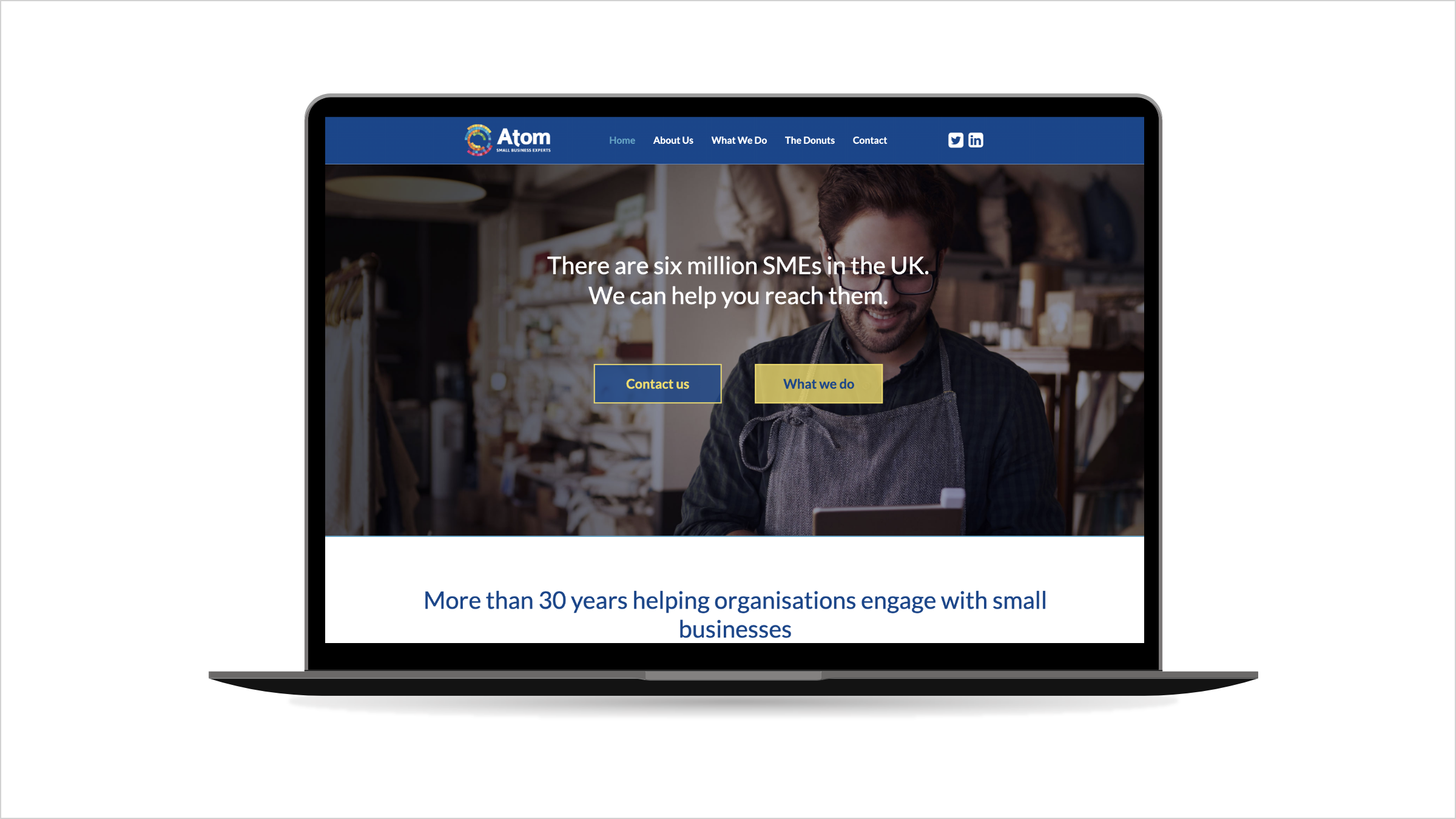Client Background and Mission
Founded in 1991, Atom Content Marketing is a dedicated content marketing agency that assists clients in effectively engaging with the challenging small business market. With more than 30 years of experience, Atom possesses a profound insight into what appeals to this demographic. Their mission is to centralize digital assets and streamline multi-domain content operations, ensuring speed, consistency, and scalability across their digital ecosystem. Built on Drupal 8, Atom’s platform is designed to empower marketing teams with agility, control, and precision.
Needs and Challenges
While Atom did not present critical blockers initially, the client required:
- Performance enhancements for a growing content hub.
- A centralized system for managing marketing collateral and memberships.
- Editorial workflow standardization across Drupal-powered Donut sites.
- Real-time bug resolution and iterative feature development.
- Continuous infrastructure maintenance with high security assurance.
Managing these needs within a multi-site Drupal 8 architecture requires careful planning, reusable configurations, and robust CI/CD deployment workflows.
Struggling with Drupal performance, content workflow chaos, or multi-site complexity?
Discover How our Experts can Help!
Now, let's see how we approached these needs and challenges!
OpenSense Labs Approach
OpenSense Labs began with an in-depth codebase audit and analysis of Atom’s Drupal 8 site architecture. Although all Donut sites shared a common base configuration, variances in business logic and third-party integrations demanded a modular and flexible approach.
We assessed methods such as decoupled CMS extensions and external content pipelines. Ultimately, we opted for a fully customized Vault module built within the Drupal ecosystem, ensuring seamless integration, content reuse, and user permissions control.
This solution aligned with the goals of performance, flexibility, and secure content distribution at scale.
Strategy
Our technical strategy centered around:
- Modular architecture to streamline deployment across Donut sites.
- Reducing friction in the editorial workflow lifecycle (creation → review → migration).
- Creating a content governance framework that incorporates role-based access control (RBAC).
- Optimizing frontend performance via JavaScript and asset minification.
- Maintaining adherence to security protocols by performing regular updates to the Drupal core.
- Establishing analytics and performance tracking through Google Analytics and New Relic.
Implementation Details
Design
UI/UX enhancements focused on usability and conversion optimization. We introduced a cleaner layout structure, accessibility improvements, and responsive design to ensure content is device-agnostic. These changes were iteratively tested using tools like BrowserStack and Lighthouse to catch edge-case rendering issues.
Development
- Developed a tailored Drupal Vault module, facilitating the dynamic export of content in both HTML and PDF formats.
- Integrated a structured editorial workflow using Drupal's Content Moderation and Workflows modules.
- Applied Drupal 8 core upgrades and implemented recurring patch management for the Donut and Vault instances.
- Configured AWS-based hosting infrastructure for scalable deployment and high uptime.
- Implemented real-time performance tracking via New Relic and usage analytics through Google Analytics.
- Utilized jQuery and modern JS techniques to improve client-side rendering and reduce page load times.
Also Check Out:
1. Earth Journalism Network: Seamless Drupal 8 Migration
2. Optimised Content Distribution for Farm Journal
3. Apply Once: A Decoupled Drupal 9 Education Portal
4. Unifying a Global Tourism Brand: Multi-Site Migration
Clean, Intuitive, User-Friendly
Atom’s reimagined content hub now supports:
- A centralized, Drupal-native Vault system for marketing content and member asset distribution.
- Optimized editorial procedures based on permissions to improve governance and oversight.
- UX enhancements that reduce cognitive load and improve content discoverability.
- Fully responsive design delivering a seamless experience across devices.
- Scalable backend infrastructure and modular content components for rapid feature expansion.
The Upshot
Through strategic Drupal 8 development and system optimization, OpenSense Labs helped Atom evolve into a secure, scalable, and efficient content marketing platform. The introduction of the Vault system empowered users to manage and distribute digital assets with minimal friction. The editorial process became more controlled and collaborative, while performance improvements led to reduced bounce rates and higher user engagement.
Security was enhanced through timely updates and infrastructure hardening, and operational costs were reduced thanks to automation and modular code reuse.
Results at a Glance
- Custom Vault System: Built on Drupal 8 for centralized content distribution.
- Editorial Workflow Automation: Enabled structured creation, review, and publishing.
- UI/UX Optimizations: Improved navigation, conversions, and mobile responsiveness.
- Security Hardening: Drupal core upgrades & regular patching.
- Real-Time Monitoring: New Relic & Google Analytics integration.
- Reduced Manual Effort: Through modular components & reusable workflows.

Client Testimonial
“We’ve partnered with OpenSense Labs to build a centralized content hub that streamlines our multi-domain operations. Their Drupal expertise, reliable support, and collaborative approach have been key to our platform’s ongoing success.” — Kasia Hetman, Founder, Atom
Lessons Learned
- Codebase Familiarity Matters: Despite shared configurations, slight variations across Donut sites led to deployment edge cases. Every environment, even within a multisite structure, must be individually validated.
- Scope Definition Prevents Rework: Unclear requirements and delayed timelines. A well-defined scope ensures smoother sprint planning and avoids redundant work.
- Deployment Discipline is Crucial: Scheduled deployments and avoiding Friday releases minimized production issues and ensured better resource availability for rollback or support.
- Feedback Loops Improve Delivery: Incorporating iterative feedback from design teams led to improved UX outcomes and client satisfaction.
- Cross-Environment Testing Pays Off: Using tools like BrowserStack for cross-browser/device validation helped identify inconsistencies early and reduced post-deployment bugs.
Best Practices for Future Projects
- Build Modularity: Leverage reusable components and configurations for faster scaling.
- Plan Review Buffers: Account for approval timelines from marketing or design teams.
- Implement CI/CD Pipelines: Ensure consistent, automated deployments.
- Use Headless/Decoupled Configs (where needed): For front-end flexibility.
- Maintain Patch Discipline: Adopt a patch calendar to avoid technical debt.








